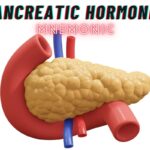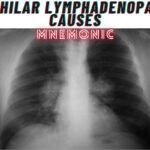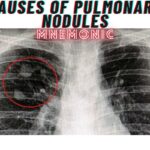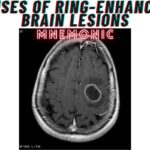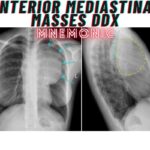Alkaptonuria is an autosomal recessive metabolic disorder. It is characterized by the deficient activity of homogentisic acid oxidase, leading to the accumulation of significant amounts of homogentisic acid—a phenolic compound. This build-up subsequently results in the gradual deposition of homogentisic acid in connective tissues (such as skin and bones), manifesting as ochronosis. Ochronosis is a hallmark feature of Alkaptonuria and is marked by dark pigmentation and tissue degeneration, primarily affecting cartilage, connective tissues, and bones, ultimately compromising musculoskeletal integrity.
Today, in this blog post, we will delve into the clinical manifestations, diagnostic approaches, and implications of managing alkaptonuria using an Alkaptonuria Triad.
Alkaptonuria Triad
-
Ochronotic arthritis
Ochronotic arthritis is a debilitating condition characterized by joint inflammation and degeneration caused by the deposition of homogentisic acid-derived pigment in connective tissues.
2. Ochronotic pigmentation
Ochronotic pigmentation is the distinctive darkening of tissues, particularly cartilage and skin, resulting from the accumulation of homogentisic acid-derived pigment in individuals with Alkaptonuria.
3. Urine darkens on standing
Urine darkens on standing due to the oxidation of accumulated homogentisic acid in Alkaptonuria.
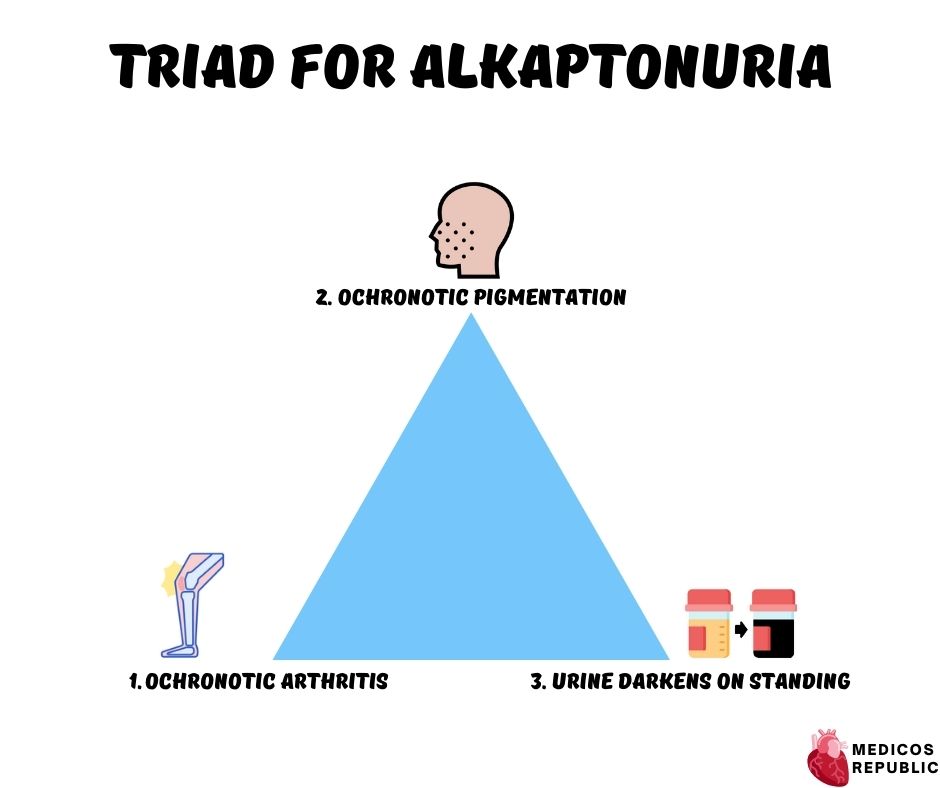
What is the gold-standard test to diagnose Alkaptonuria?
The gold-standard test to diagnose Alkaptonuria is the measurement of urinary homogentisic acid levels, also referred to as homogentisic aciduria.
Happy learning, folks! 🙂

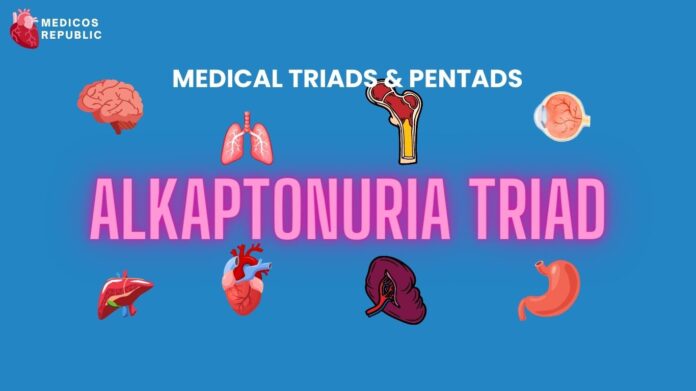
![Congenital Toxoplasmosis Triad [Pictorial] Congenital Toxoplasmosis Triad](https://www.medicosrepublic.com/wp-content/uploads/2023/08/Congenital-Toxoplasmosis-Triad-Pictorial-1-218x150.jpg)
![Pentalogy of Cantrell for Thoraco-abdominal Syndrome [Pictorial]](https://www.medicosrepublic.com/wp-content/uploads/2023/08/Pentalogy-of-Cantrell-for-Thoraco-abdominal-Syndrome-Pictorial-1-218x150.jpg)
![Pentad of Thrombotic Thrombocytopenic Purpura [Pictorial & High-yield] Pentad of TTP](https://www.medicosrepublic.com/wp-content/uploads/2023/08/Pentad-of-Thrombotic-Thrombocytopenic-Purpura-TTP-218x150.jpg)
![Gradenigo’s Triad for Gradenigo’s Syndrome [Pictorial & High-yield]](https://www.medicosrepublic.com/wp-content/uploads/2023/08/Gradenigos-Triad-for-Gradenigos-Syndrome-Pictorial-High-yield-218x150.jpg)
![Dieulafoy’s Triad for Acute Appendicitis [Pictorial Explanation] Dieulafoy's Triad](https://www.medicosrepublic.com/wp-content/uploads/2023/08/Dieulafoys-Triad-for-Acute-Appendicitis-218x150.jpg)

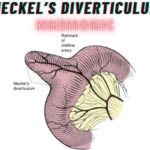
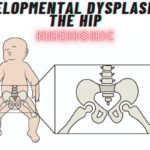
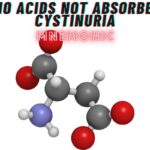
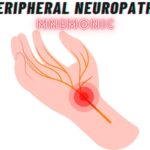
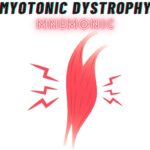
![Gerstmann Syndrome Features Mnemonic [Easy-to-remember] Gerstmann Syndrome Features Mnemonic](https://www.medicosrepublic.com/wp-content/uploads/2025/06/Gerstmann-Syndrome-Features-Mnemonic-150x150.jpg)
![Cerebellar Signs Mnemonic [Easy to remember] Cerebellar Signs Mnemonic](https://www.medicosrepublic.com/wp-content/uploads/2025/06/Cerebellar-Signs-Mnemonic-150x150.jpg)
![Seizure Features Mnemonic [Easy-to-remember] Seizure Features Mnemonic](https://www.medicosrepublic.com/wp-content/uploads/2025/06/Seizure-Features-Mnemonic-1-150x150.jpg)

![Recognizing end-of-life Mnemonic [Easy to remember]](https://www.medicosrepublic.com/wp-content/uploads/2025/06/Recognizing-end-of-life-Mnemonic-150x150.jpg)
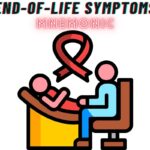
![Multi-System Atrophy Mnemonic [Easy-to-remember] Multi-System Atrophy Mnemonic](https://www.medicosrepublic.com/wp-content/uploads/2025/06/Multi-System-Atrophy-Mnemonic-150x150.jpg)
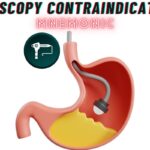
![How to Remember Southern, Northern, and Western Blot Tests [Mnemonic] How to Remember Southern, Northern, and Western Blot Tests](https://www.medicosrepublic.com/wp-content/uploads/2025/06/How-to-Remember-Southern-Northern-and-Western-Blot-Tests-150x150.jpg)
